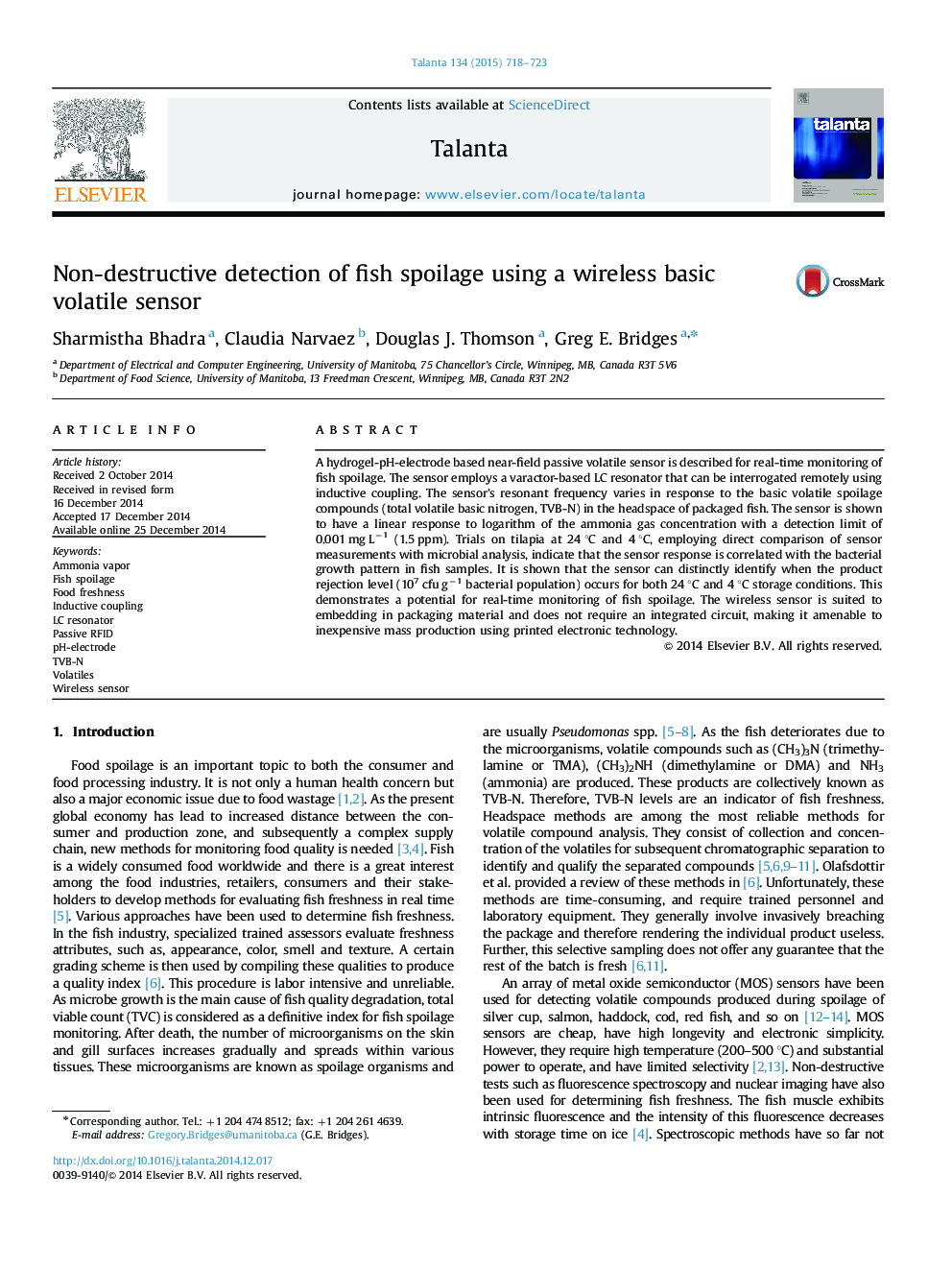| کد مقاله | کد نشریه | سال انتشار | مقاله انگلیسی | نسخه تمام متن |
|---|---|---|---|---|
| 1244138 | 1495801 | 2015 | 6 صفحه PDF | دانلود رایگان |
• We report the use of a wireless basic volatile sensor for detecting fish spoilage.
• The sensor is based on a hydrogel coated pH-sensitive electrode pair.
• It employs a passive LC resonator and does not require batteries or a custom integrated circuit.
• The sensor׳s response is correlated with the bacterial growth pattern in fish.
• The sensor can distinctly identify when the product rejection level occurs in fish.
A hydrogel-pH-electrode based near-field passive volatile sensor is described for real-time monitoring of fish spoilage. The sensor employs a varactor-based LC resonator that can be interrogated remotely using inductive coupling. The sensor׳s resonant frequency varies in response to the basic volatile spoilage compounds (total volatile basic nitrogen, TVB-N) in the headspace of packaged fish. The sensor is shown to have a linear response to logarithm of the ammonia gas concentration with a detection limit of 0.001 mg L−1 (1.5 ppm). Trials on tilapia at 24 °C and 4 °C, employing direct comparison of sensor measurements with microbial analysis, indicate that the sensor response is correlated with the bacterial growth pattern in fish samples. It is shown that the sensor can distinctly identify when the product rejection level (107 cfu g−1 bacterial population) occurs for both 24 °C and 4 °C storage conditions. This demonstrates a potential for real-time monitoring of fish spoilage. The wireless sensor is suited to embedding in packaging material and does not require an integrated circuit, making it amenable to inexpensive mass production using printed electronic technology.
Figure optionsDownload as PowerPoint slide
Journal: Talanta - Volume 134, 1 March 2015, Pages 718–723
